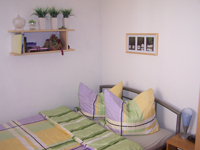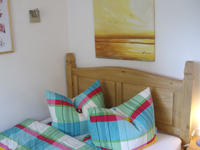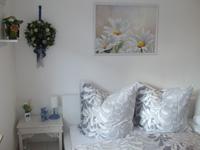Apartment Cologne presents: Rath / Heumar
Rath / Heumar is located on the right bank of the Rhine in the Kalk district.

| District number | area | residents |
| 808 | 12.91 square kilometers | 12,000 |
Location
East of the district is Bergisch Gladbach and Rösrath. South is Eil , west Gremberghoven and Ostheim and northwest of Neubrück . Brück forms the northern border of Rath / Heumar.
History
The area was already populated before the birth of Christ. There is a hand ax found from the Stone Age. The Hallstatt period is occupied with burial mound fields. Heumar and Rath have been part of the Porz Office since the Middle Ages. The Grand Duchy of Berg was established in 1806 and in 1808 Rath and Heumar fell to the Mairie Heumar in the canton of Mülheim. Rath and Heumar belonged to the Kingdom of Prussia since 1815. In 1910 Rath was incorporated into the city of Cologne. Heumar then belonged together with Wahn in 1929 to Porz .
Development and economy
The district has two castles : south of the house Röttgen and north of the house Rath. They are located on the outskirts and have extensive green areas and forests. This area has been used for farming, cattle breeding and forestry for over 1000 years. There were many large courtyards surrounded by houses. The Rather Castle was destroyed by fire in the 19th century. The Durchhäuser Hof was first mentioned in AD 1000. The courtyard included around twelve fief yards. Other farms were at the Felderhof, Maarhäuser Hof, Strundener Hof and Marcellenhof on Lützerathstraße.
The old arms of the Rhine occasionally caused flooding. Up until the 1960s, areas here were sometimes flooded . If there was a flood, the citizens of Rather fled to the Flohberg . It is a hill on Rösrather Straße. When Flehbach and Stunder Bach were dammed, there were no more floods. The town center existed at the confluence of the Eiler and Rösrather Straße. Here the two altars came together and the boundary line of the two places also meets here. There was an agricultural economy in the village and there were blacksmiths, saddlers, wheelwrights, shoemakers and tailors . They came into the houses for their work. When the railway line was expanded, more and more businesses were established. In 1912, the perforated sheet metal factory was the largest employer. The company also had its own siding. In the past, people were largely self-sufficient. Therefore, there were only a few shopkeepers who offered colonial goods here.
Röttgen Castle
The Röttgen Castle catches the eye in the village. It is located in Heumar and is over two square kilometers in size. It was built as a knight's seat in the Middle Ages. In 1866 a mansion was built here, which still exists today. The area has an eight kilometer wall. In 1924 Peter Mülhens founded the Röttgen stud here. The stud is one of the most outstanding whole blood stud farms in Germany.
Traffic
In 1857 the Rösrather Straße was expanded and the place was opened up to traffic. The highway has been leading through the village since 1936 and the Heumarer Dreieck is located to the west. Excursion traffic developed and cafes, restaurants and a hotel were built on the mouse path. The railway line was built from Kalk to Overath in 1910 and a train station was built in Heumar . However, this was not used enough and closed. From 1920 settlements were built here, including the "Königsforst" settlement. The "Old Tower" is the symbol of Rath / Heumar. A Romanesque church was built here in 1147. It is located on a hill in the corner of the Maare. A baroque chapel from 1741, which is located on Lützerathstraße, is also the oldest building in Rath. Rath / Heumar has been a place of pilgrimage for centuries. In September there is a patron saint festival and many pilgrims. There was also a fun fair in Rath / Heumar, which was the largest in the area with many stalls.
Rath and Heumar were originally two places, so there are also two Catholic parishes. The church of St. Cornelius in Heumar was built in 1833/34. In 1880/81 and 1887 there was an expansion. The Romanesque tower of the old Corneliuskirche is still there. From 1953 to 1955 Fritz Schaller had the church "To the Divine Redeemer" built in Rath.
Book accommodation
Do you want to spend a few days in the cathedral city? We have the perfect accommodations for you! Ask right away at apartment cologne for a non-binding offer! Messezimmer and the vacation rentals are very close to the fair! We look forward to your non-binding inquiry!



.gif)
.gif)
.gif)
.gif)
.gif)
.gif)
.gif)
.gif)
.gif)
.gif)
.gif)
.gif)
